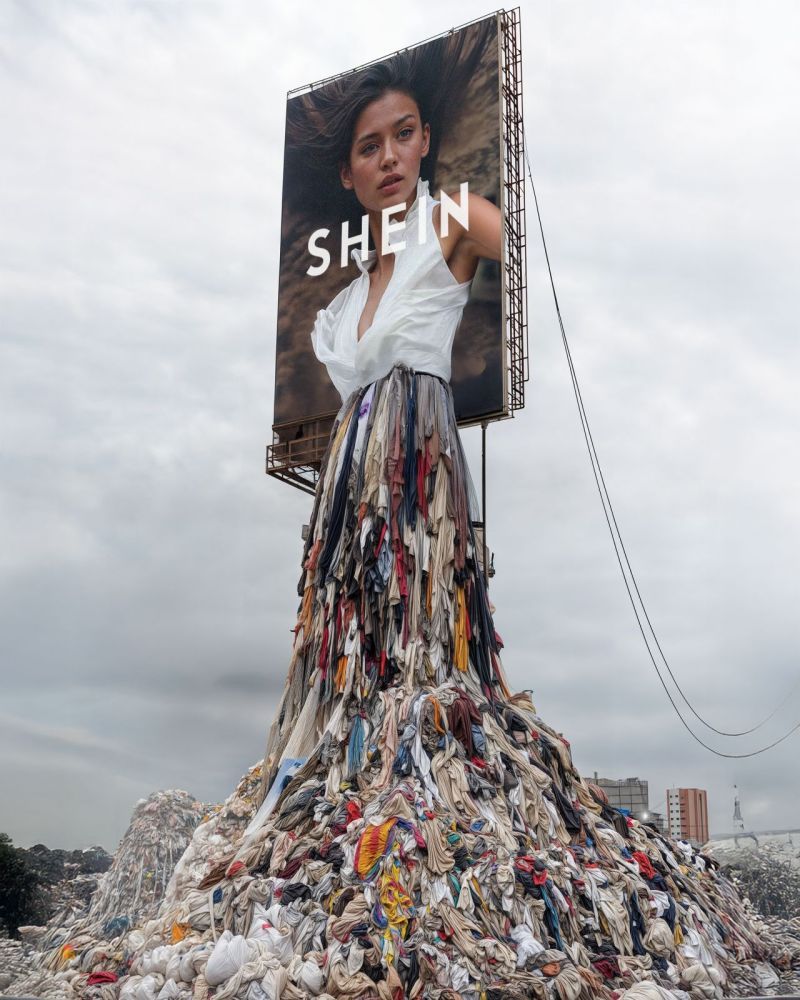Gujarat, India — A single kilogram of cotton—enough to produce one pair of jeans and a t-shirt—consumes nearly 20,000 litres of water. This staggering statistic, confirmed by the Water Footprint Network, has sparked increasing scrutiny over the fashion industry’s resource consumption, particularly its impact on water-scarce regions in the developing world.
Yet the problem runs deeper than just thirsty crops. Behind the cheap tags and seasonal sales of fast fashion lies an invisible ecological footprint—one borne largely by the world’s poorest.
Fast Fashion’s Thirst for Cotton
Fast fashion, characterized by its high-speed, low-cost production model, has become a cornerstone of global consumer culture. Brands churn out collections at breakneck speed, encouraging consumers to buy cheap, trendy clothing that often ends up discarded within weeks. But few pause to ask: who pays the environmental price?
India, the world’s second-largest producer of cotton, finds itself at the heart of this question. The country is a key sourcing hub for global apparel giants, largely because of its low production costs and lax environmental enforcement in comparison to Western nations.
According to a 2013 study by the Institute of Water Policy at the National University of Singapore, the water used to grow cotton for export from India in just one year could have satisfied 85% of the country’s 1.2 billion people’s daily water needs for a full year.

Dry Lands, Wet Crops
Cotton, although economically vital, is notoriously water-intensive. Yet most of India’s cotton cultivation takes place in its driest regions—Gujarat, Maharashtra, and Madhya Pradesh—where water scarcity is already an existential issue.
“In these states, farmers often rely on overdrawn groundwater or heavily subsidized irrigation systems to grow cotton,” explains Dr. Ritu Verma, a water management expert at TERI (The Energy and Resources Institute). “The strain on water tables is immense, and the long-term sustainability of this model is in serious doubt.”
Reports from the Central Ground Water Board of India reveal that more than 30% of India’s groundwater blocks are ‘over-exploited’, meaning water is being used faster than it can be replenished.
The Export Dilemma
The irony is hard to ignore: India exports billions of litres of virtual water—the water embedded in products like cotton—while nearly 600 million Indians face high to extreme water stress, according to a 2018 report by NITI Aayog.
But in the global fashion ecosystem, production gravitates toward the cheapest sources, regardless of ecological costs. Countries like India, Bangladesh, and Indonesia offer both inexpensive labor and weak environmental regulations—an ideal formula for fast fashion.
“Western nations have stringent environmental laws,” notes Arpita Sharma, a policy analyst with the Centre for Science and Environment. “So brands shift their polluting processes to the Global South, allowing them to maintain a clean image at home while quietly degrading ecosystems abroad.”
Marketing Over Morals
Meanwhile, the fast fashion industry invests billions in marketing, influencer sponsorships, and trend culture. Social media platforms become echo chambers of style anxiety, where consumers feel compelled to update their wardrobes to remain “on trend.”
This strategy isn’t accidental. “Brands deliberately tether self-worth to consumption,” says psychologist Dr. Neha Kaul. “By promoting image-based value systems, they ensure that people keep buying—not out of need, but out of a fear of exclusion.”
Acharya Prashant, a renowned educator and social commentator, recently criticized this psychological manipulation in a viral speech:
“This is how they rot you—by rotting your entire value system. The only antidote is self-education.”

A System Ripe for Rethinking
Experts warn that the status quo is untenable—not just for environmental reasons, but for ethical ones.
Garment workers in developing countries often earn below living wages, while facing hazardous conditions and zero social security. Simultaneously, their land and water are diverted to produce raw materials for export, draining local resources for distant profits.
Calls for change are growing. Sustainable fashion advocates are pushing for transparency in supply chains, fair trade certification, and water-efficient crops like hemp and linen. Others argue for “slow fashion”—buying less, choosing quality over quantity, and reusing garments.
What Can Consumers Do?
Change begins with awareness. Knowing the true cost of a t-shirt—not just in dollars, but in water, soil, and human lives—can shift behavior.
Buy less. Buy better. Ask questions.
Where was this made? Who made it? At what cost?
Until the average consumer begins to ask these questions, fast fashion will continue to thrive—feeding off ignorance and fueled by fleeting trends.







More Stories
Maithili Thakur: From Folk Singing Sensation to Rising Political Star
Mysuru Dasara: The Royal Festival of Karnataka – History, Culture, and Celebration
Blood Moon Over Sydney: Unveiling the Celestial Show with Telephoto Magic